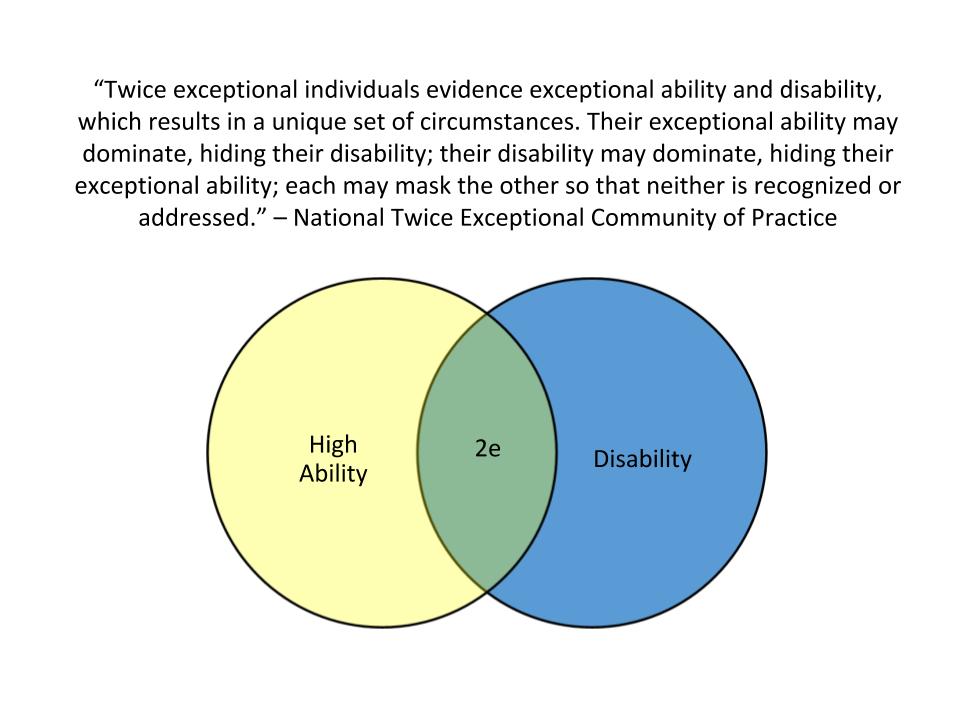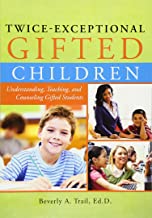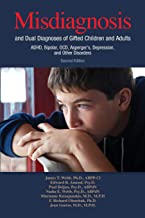The twice exceptional (or 2e for short) are individuals who have one or more disability in addition to their giftedness. Their disability may mask their true intellectual ability or interfere with academic achievement.
GiftedNYS has adopted the definition of twice exceptional developed by The National Twice-Exceptional Community of Practice (2e COP). The 2e COP defined twice exceptional as:
“Twice exceptional (2e) individuals evidence exceptional ability and disability, which results in a unique set of circumstances. Their exceptional ability may dominate, hiding their disability; their disability may dominate, hiding their exceptional ability; each may mask the other so that neither is recognized or addressed.
2e students, who may perform below, at or above grade level, require the following:
- Specialized methods of identification that consider the possible interaction of the exceptionalities.
- Enriched/advanced educational opportunities that develop the child’s interests, gifts and talents while also meeting the child’s learning needs.
- Simultaneous supports that ensure the child’s academic success and social-emotional well-being, such as accommodations, therapeutic interventions, and specialized instruction.
Working successfully with this unique population requires specialized academic training and ongoing professional development.”

Like all children, twice exceptional learners deserve the chance to explore and reach their fullest potential, and they need special support to do so. GiftedNYS believes in a strength-based, “gifted first” approach to twice exceptional education.
Suggested Websites
Twice Exceptional Children’s Advocacy (TECA)
Wrightslaw Special Education Law
Suggested Reading

Twice-Exceptional Gifted Children
Beverly Trail

Misdiagnosis and Dual Diagnosis of Gifted Children and Adults
James T. Webb

Supporting and Educating Bright and Creative Students with Learning Difficulties
Scott Barry Kaufman
